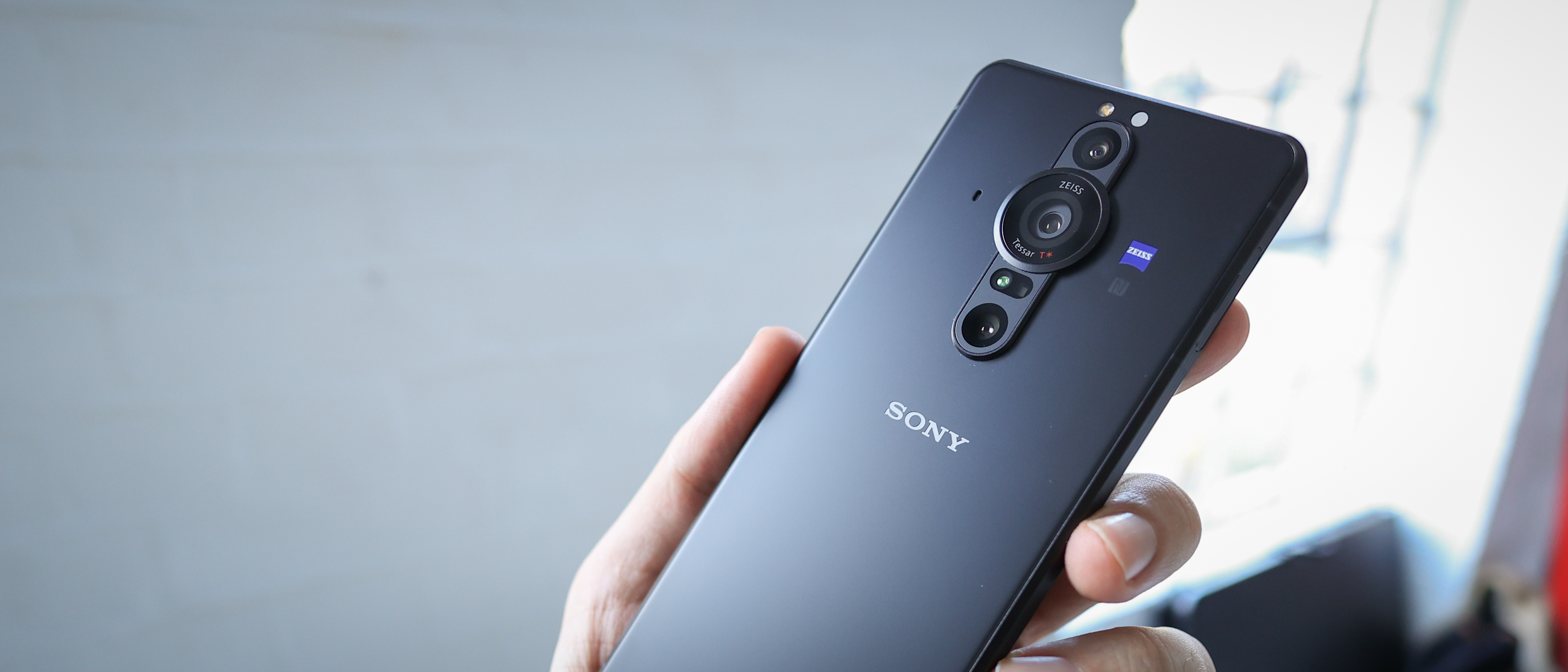TechRadar Verdict
The Sony Xperia Pro-I is a welcome addition to Sony’s smartphone line, and is the most meaningful marriage of Sony’s imaging and mobile divisions to date. It’s also a very capable camera phone that will likely woo enthusiast photographers and videographers (who aren’t wedded to Apple). Its mass appeal is limited, though, given its high price, Sony’s very traditional photo processing and the fact it lacks features like wireless charging and a periscope camera.
Pros
- +
Great photo and video capture
- +
Class-leading manual camera modes
- +
Premium design and features
- +
Powerful internals
- +
All-day battery life
Cons
- -
No wireless charging
- -
Traditional photo processing has limited appeal
- -
No periscope zoom camera
- -
Secondary cameras fail to shine
- -
Incredibly expensive
Why you can trust TechRadar
Two-minute review
Sony’s flagship smartphones, like the Sony Xperia 1 III, have always had their focus fixed firmly on photography purists. While Apple, Google, and Huawei were boosting shadows and creating night modes that made evenings look like mornings, Sony was sticking to its guns. If you’re taking a backlit photo with a Sony phone, it will produce a dramatic silhouette. If you’re shooting at midnight – it will look like nighttime.
This purist photo processing has divided smartphone enthusiasts into two camps: the Sony camp and the 'everyone else' camp. It’s also resulted in Sony fans on social media being among the most vocal and impassioned, defending the Japanese tech brand to the digital death.
The Xperia Pro-I was born against this backdrop. While Sony’s been piling on camera apps that have mirrored its compact and film camera lines for a couple of years now, starting with the Xperia 1, the Pro-I is the first to feature hardware that’s directly trickled down from Sony imaging; specifically, the sensor.

Sony’s popular RX100 line features a 1.0-type sensor. While this became synonymous with being one inch, on the Xperia Pro-I, the 1.0 type sensor doesn’t measure up. Instead, it uses a portion of the 1-inch sensor – 12MP of it to be precise.
So while the Xperia Pro-I features a large sensor by smartphone standards, its size is nothing we haven’t seen before, with the Xiaomi Mi 11 Ultra’s sensor being larger, and the Galaxy S21 Ultra’s matching it.
So who in their right mind would pay a premium price for a smartphone with hardware that wasn’t treading new turf? Three groups of people: Sony fans, photography purists, and videographers who aren’t in a monogamous relationship with Apple.
With that all accounted for, the Sony Xperia Pro-I is a good phone across the board. Its design is very Sony, and also flagship with premium glass and metal matched with welcome photography-focused accents like that shutter release and textured frame. Its screen is also punchy and sharp, albeit a little dull in direct sunlight. As for Sony’s UI, it’s reliably clean and just a couple of degrees off stock Android.
With flagship power, 512GB storage, SD card support and nippy 5G data speeds, there’s very little missing from the Xperia Pro-I – wireless charging is the main feature that springs to mind. That said, whether or not you should buy this expensive camera phone will, for the most part, depend on your taste in image processing. Do you pick the very best in Sony-style traditional photo processing and dedicated manual photo and video apps, or alternatively, a modern point-shoot-and-share camera?
Sony Xperia Pro-I release date and price
The Sony Xperia Pro-I is available to buy in the US for $1,799 and the UK for £1,599. Australian availability hasn’t been confirmed, but it is available to import for approximately AU$2,600.
Launched in December 2021, it’s the second Pro series phone from Sony, and the first to feature a new camera system. The phone is only available in black with 512GB of storage. That puts the Xperia Pro-I at around $400/£200 more than a 512GB iPhone 13 Pro Max.
Sony Xperia Pro-I design
The Sony Xperia Pro-I is a Sony phone through and through. It has that tall physique we’ve grown used to since the original Xperia 1 launched three years ago. There’s no notch in sight, and the stretched 21:9 display makes for a slender impression.
The frame of the phone is blasted metal, with a hefty chamfer around the front and back sandwiched between two panes of glass: Gorilla Glass Victus on the front and Gorilla Glass 6 around the back. Adding to the hardy factor of the Xperia Pro-I is that, unlike the Pro, it’s water-resistant with IP68 certification.
Sony also made the Xperia Pro-I easier to grip than most metal-framed phones, with the Pro-I’s frame sporting a groove that bands all around it. This makes extra surface for your fingers to grip onto available, and we enjoy both the visual and tactile detail this adds.
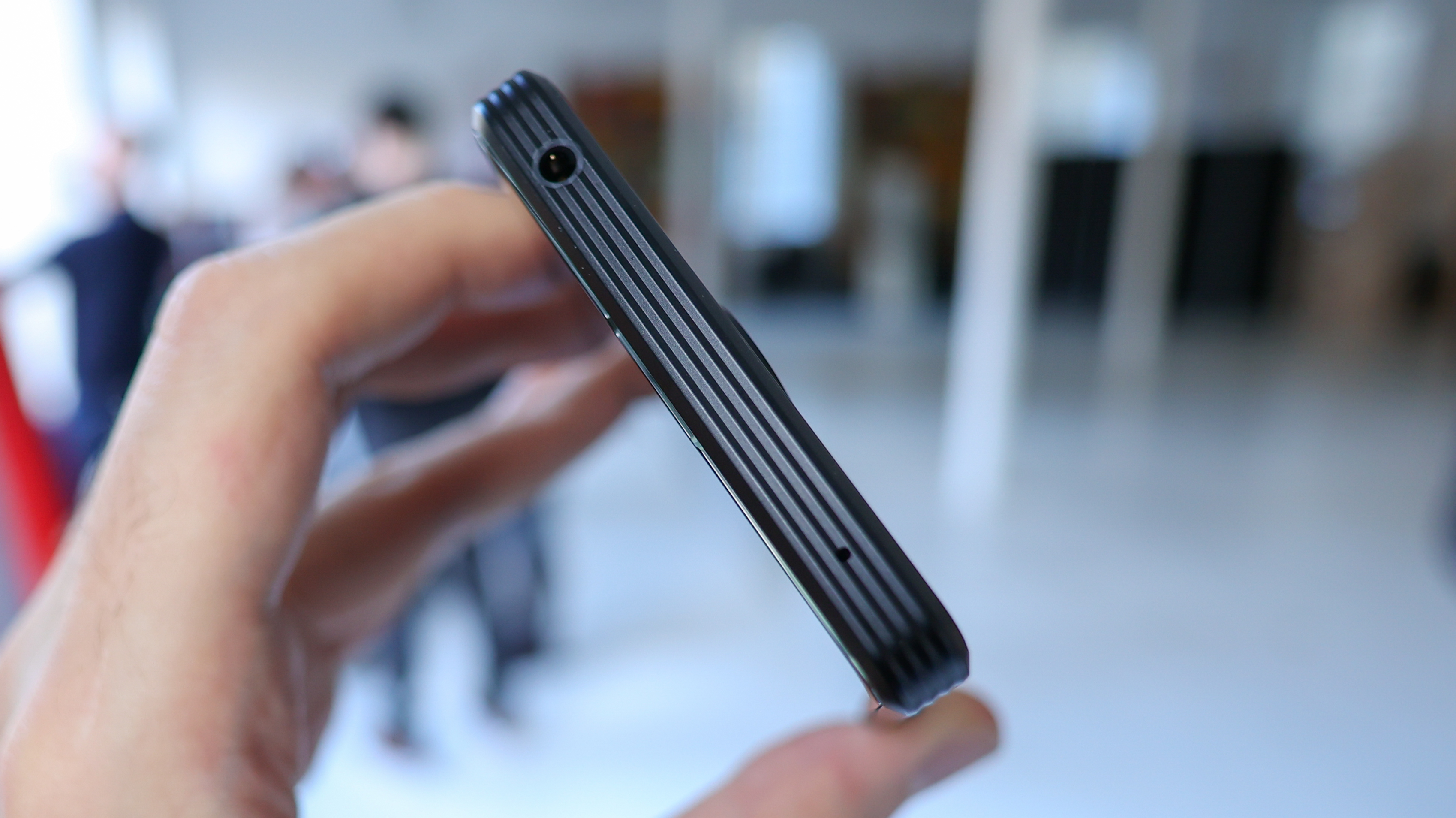
Alongside an iPhone 13 Pro Max and Pixel 6 Pro, the Xperia Pro-I is without a doubt the most secure in the hand. It’s also the easiest to grip, given its slender 72mm width, and is almost the lightest, weighing 211g, versus the iPhone’s 240g, and the Pixel 6 Pro’s 210g.
Around the back of the phone, a centered camera surround is the star. The primary camera protrudes the most, with stepped secondary cameras – an ultra-wide camera above, and a telephoto (portrait) camera below. The matte glass back feels much more premium than the original Xperia Pro, and its satin finish is reminiscent of the best from Apple and Samsung.
On the top side of the Xperia Pro-I, a 3.5mm headphone jack is poised to please audiophiles, while a USB-C port lives at the bottom of the phone. This isn’t just for data and charging – the USB-C port can turn the phone into an external monitor for your camera with the right adapter, making the original Xperia Pro seem redundant.
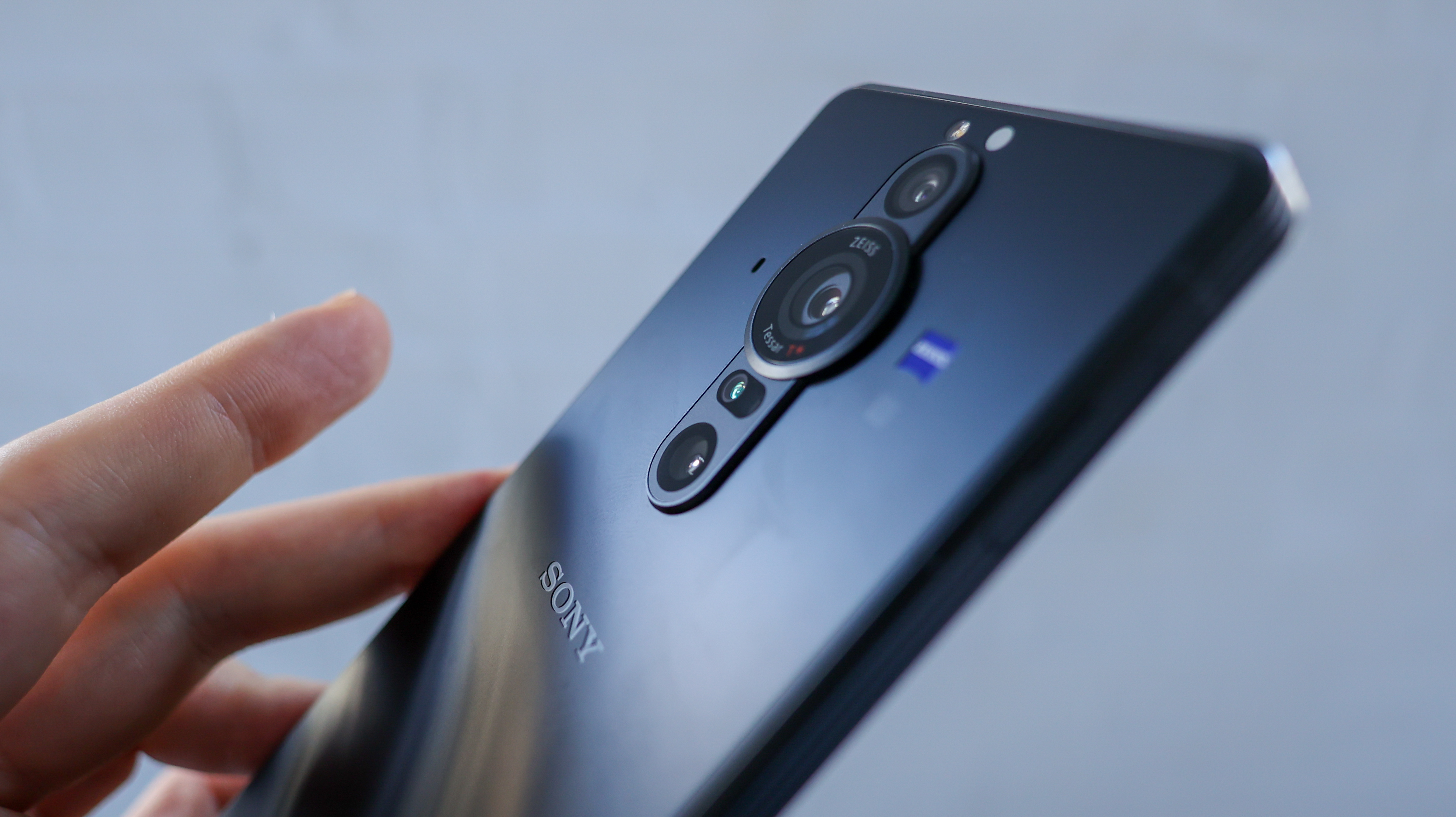
As far as buttons go, there are plenty of them, with a volume rocker, fingerprint scanner/power button combo, shortcut key, and camera key all on the right side.
The camera key on the Xperia Pro-I is unlike anything we’ve seen on a phone. First, it’s large, in contrast to the tiny nub that subtly pokes out of the Xperia 1 III and Xperia 5 III. It’s also textured with a fine criss-cross ridged pattern. This makes it easy for a fumbling finger to identify. Surprisingly, it’s also very spongy, which is a strange move. Despite being two-stage when pressed – half-press to focus, press all the way to capture – it doesn’t have a satisfying half-press resistance which we would have preferred.
Ultimately, the Xperia Pro-I’s design comes together well, and while it isn’t as visually elegant as a Google Pixel 6 Pro, or as striking to look at as an iPhone, it feels excellent, and looks classic.
Sony Xperia Pro-I screen
The Xperia Pro-I’s display is a 10-bit OLED panel with a 120Hz refresh rate. This is already a great start, and with HDR and BT.2020 color space support, it aligns the phone’s screen with top-tier Sony phones of old, including the original Pro. This also tees the phone up for filmmakers.
With a 4K resolution and a pixel density of 643 pixels per inch, on paper, nothing out of the Sony camp comes close when it comes to clarity, though the screen runs at a virtual resolution of 1096 x 2560 most of the time, so you’ll seldom see a true 4K image being displayed, especially when working your way through the interface.
Despite this downsampling, the Xperia Pro-I still delivers a better quality display than much 1080p hardware might owing to the pentile sub-pixel formation of AMOLED displays. So with a true pixel density of over 400 pixels per inch, everything looks very sharp.
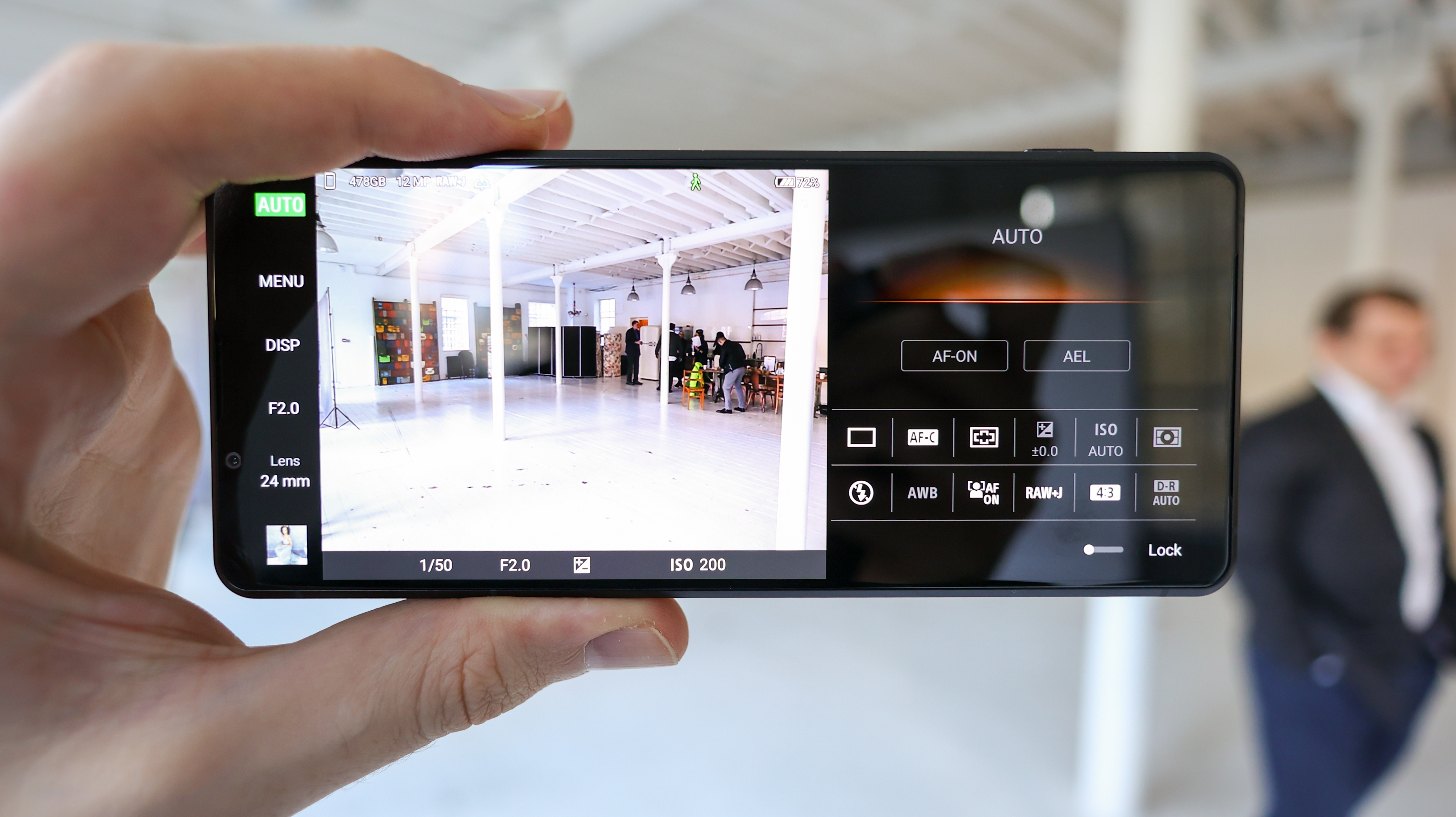
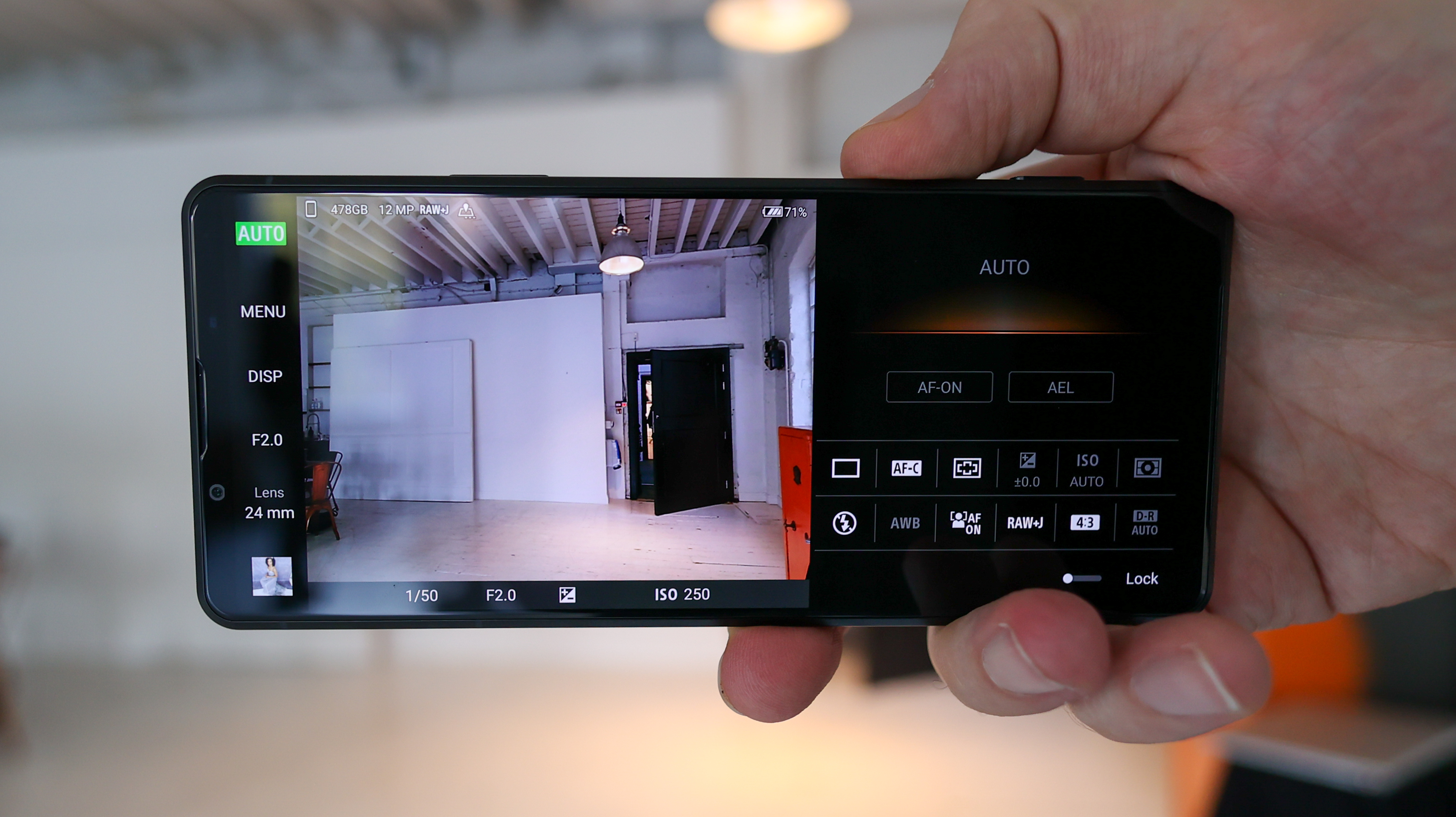
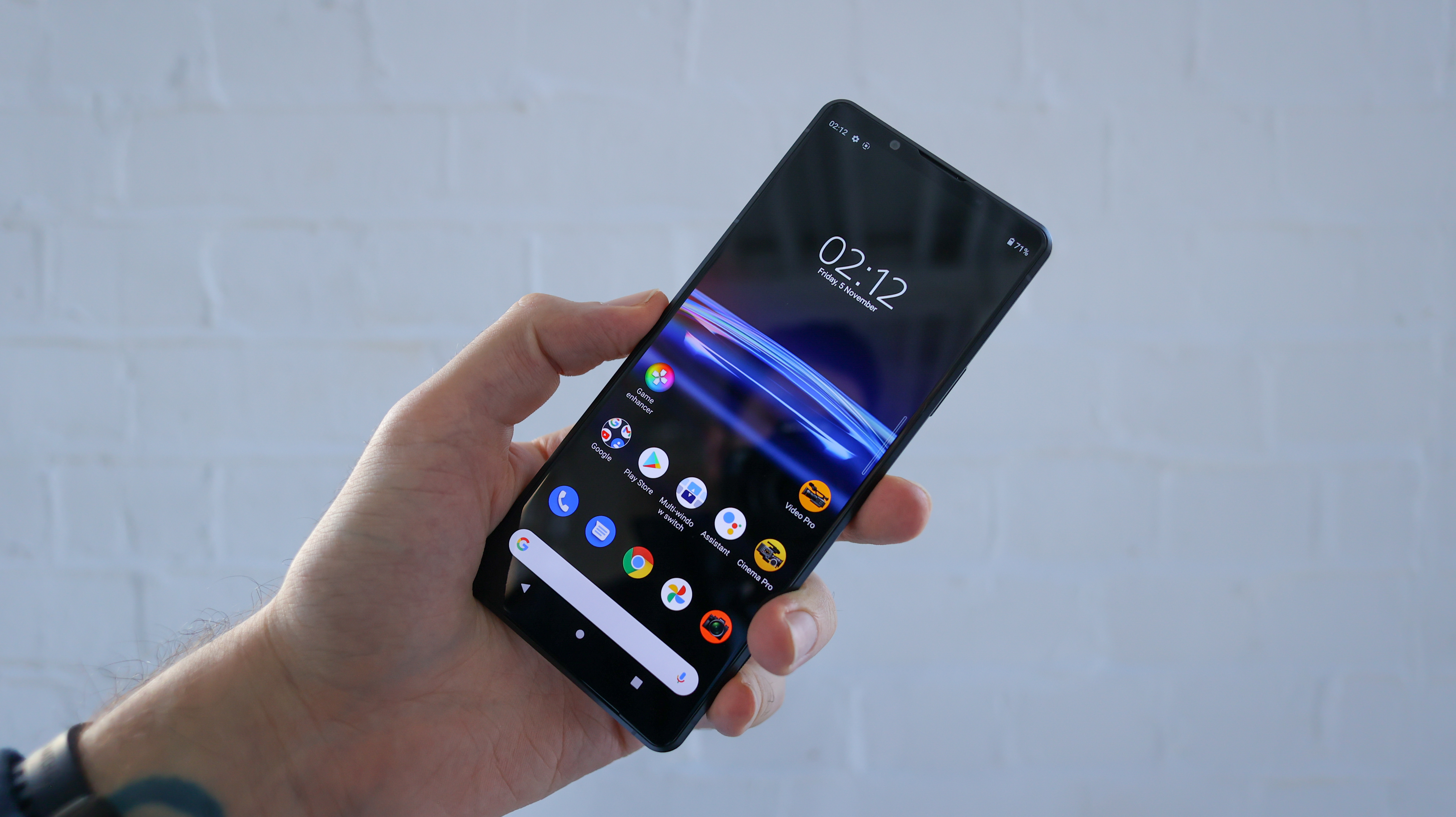
A tall 21:9 aspect ratio matched with a 6.5-inch size makes the whole phone long and narrow, and easier to hold than much of the competition. Its height means thumbing from the middle to the top will require a stretch or be a two-handed job. It’s also worth noting, it doesn’t have any notches or punch-hole cameras. Instead, the bezel above the display is a bit chunkier to accommodate that 8MP selfie camera.
The sheer display quality is excellent on the Xperia Pro-I. Whether watching movies, playing games, browsing a site, or swiping through an app, blacks are deep, colors are punchy, and there’s a degree of customization in the settings to change the look, warm things up or cool them down.
Viewing angles from all sides are strong; however, the Pro-I can struggle in very bright environments, especially off-angle. This isn’t a deal-breaker, and just continues a trend – the entire Sony Xperia 1 line hasn’t been able to keep up with iPhones and Samsung Galaxy flagships when it comes to brightness.
Sony Xperia Pro-I cameras
The Xperia Pro-I only uses a 12MP crop of its 1.0-type Exmor RS sensor, which in reality means it's closer to a 1/1.33in sensor.
Still, it delivers a pixel size of 2.4μm, which is still huge for smartphones, with the iPhone 13 Pro Max’s 12MP sensor featuring 1.9μm pixels. This means that, while it falls behind the binned pixels created by the Nokia Pureview 808 and Xiaomi Mi 11 Ultra’s oversampled sensors, it still sports larger individual pixels than any other mainstream smartphone sensor on the market.
The Xperia Pro-I’s primary camera also enjoys a variable aperture which can be set to f/2 or f/4. As for the secondary cameras, there’s a 12MP, 1/2.5-inch, f/2.2, 16mm ultra-wide, and a 12MP, 1/2.9-inch, f/2.4, 50mm portrait lens (2x zoom equivalent). The primary camera and portrait lens enjoy OIS.
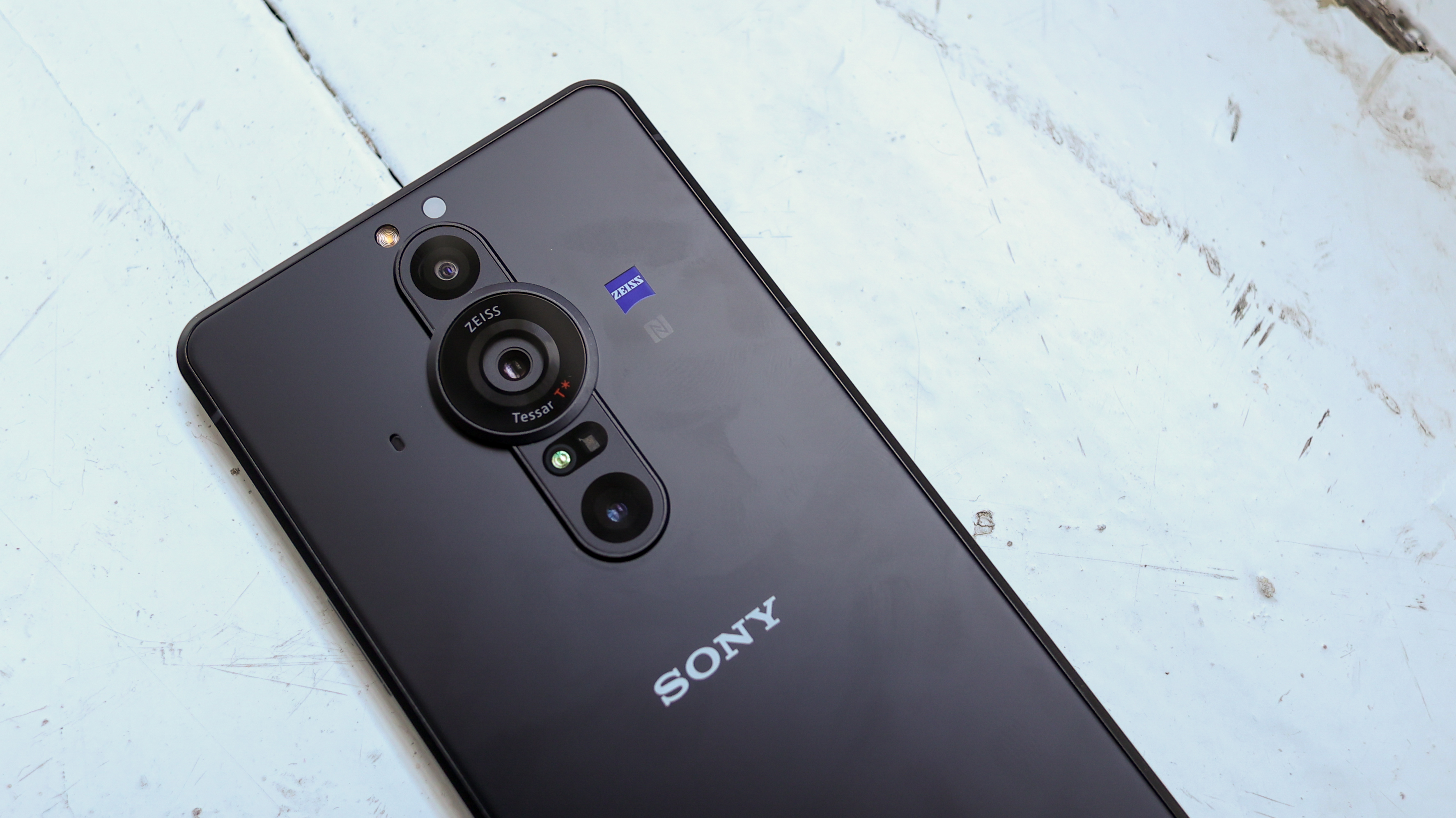
If you think the Xperia Pro-I features the best cameras Sony makes for mobile, you’re only partly right. While the primary camera is indeed mighty with that large sensor, the Pro-I’s telephoto camera is modest with a 50mm focal length, versus the Xperia 1 III and Xperia 5 III, which reach as far as 105mm. As for the ultra-wide and selfie cameras, they are the same across all three phones, with fixed-focus lenses.
The Xperia Pro-I’s secondary cameras are clearly beaten when it comes to ultra-wide shots by the likes of the Oppo Find X3 Pro, and telephoto capture by the Pixel 6 Pro, Samsung Galaxy S21 Ultra, and other periscope cameras. That’s a shame, given the phone’s punchy price.
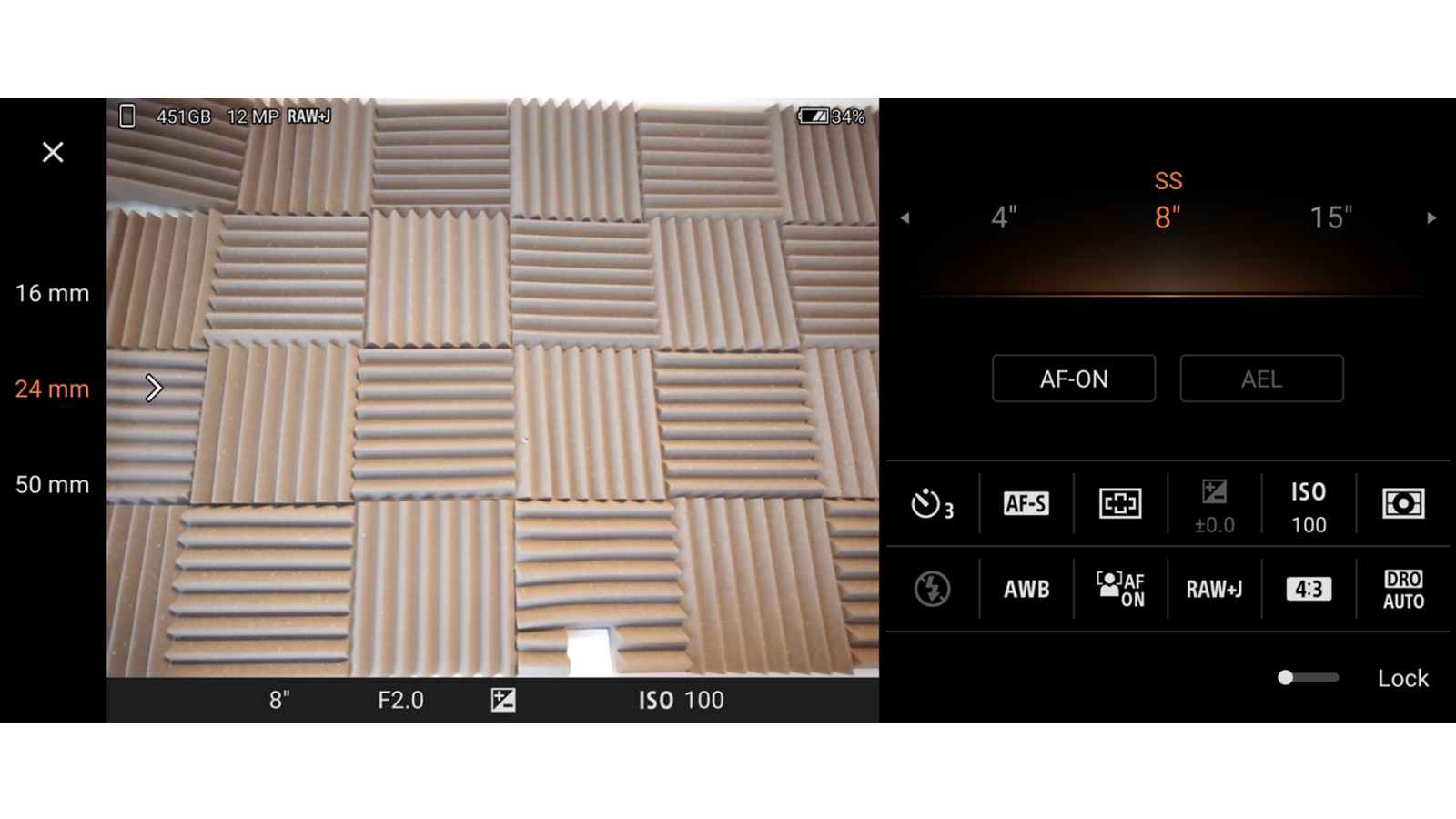
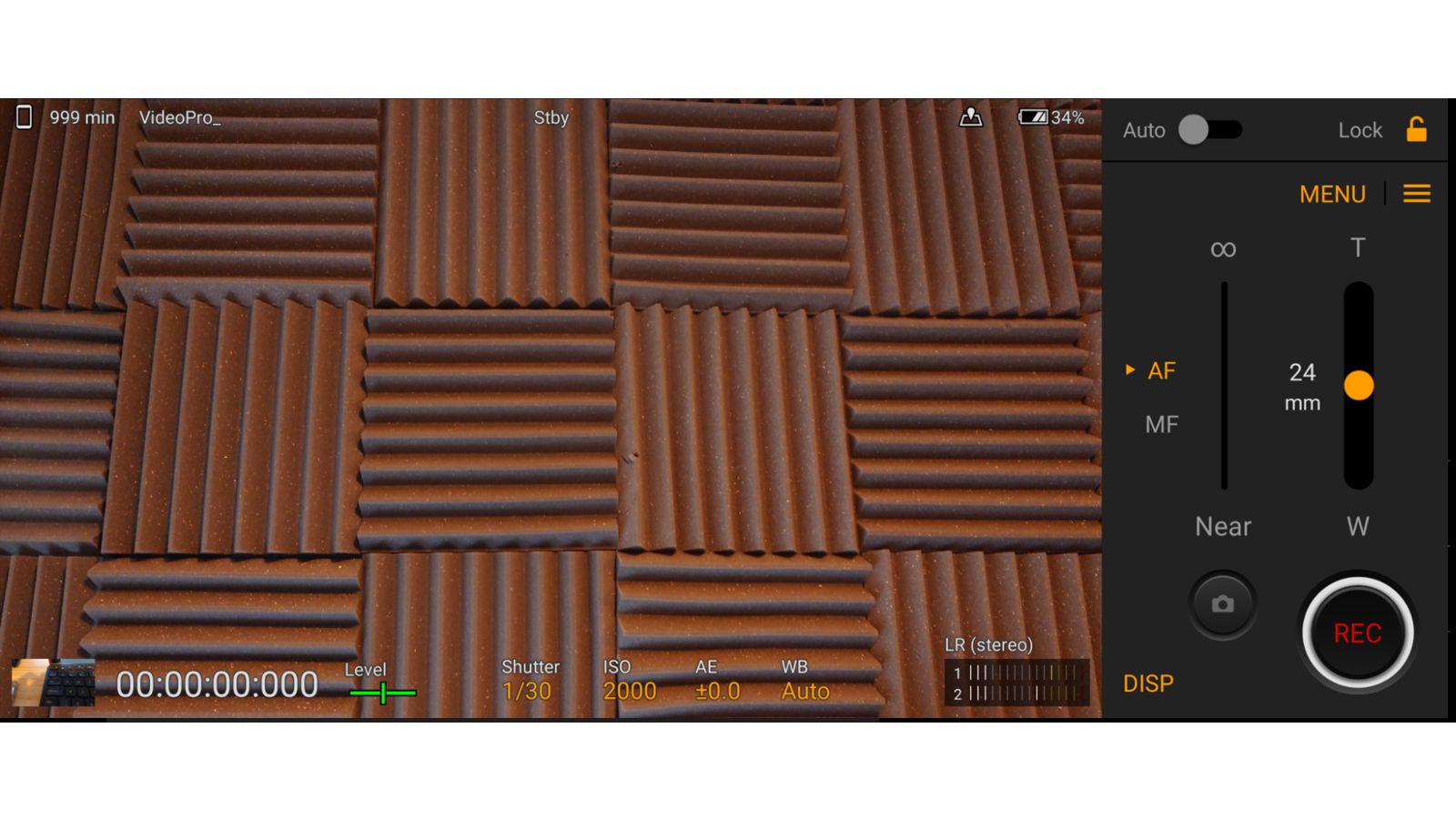
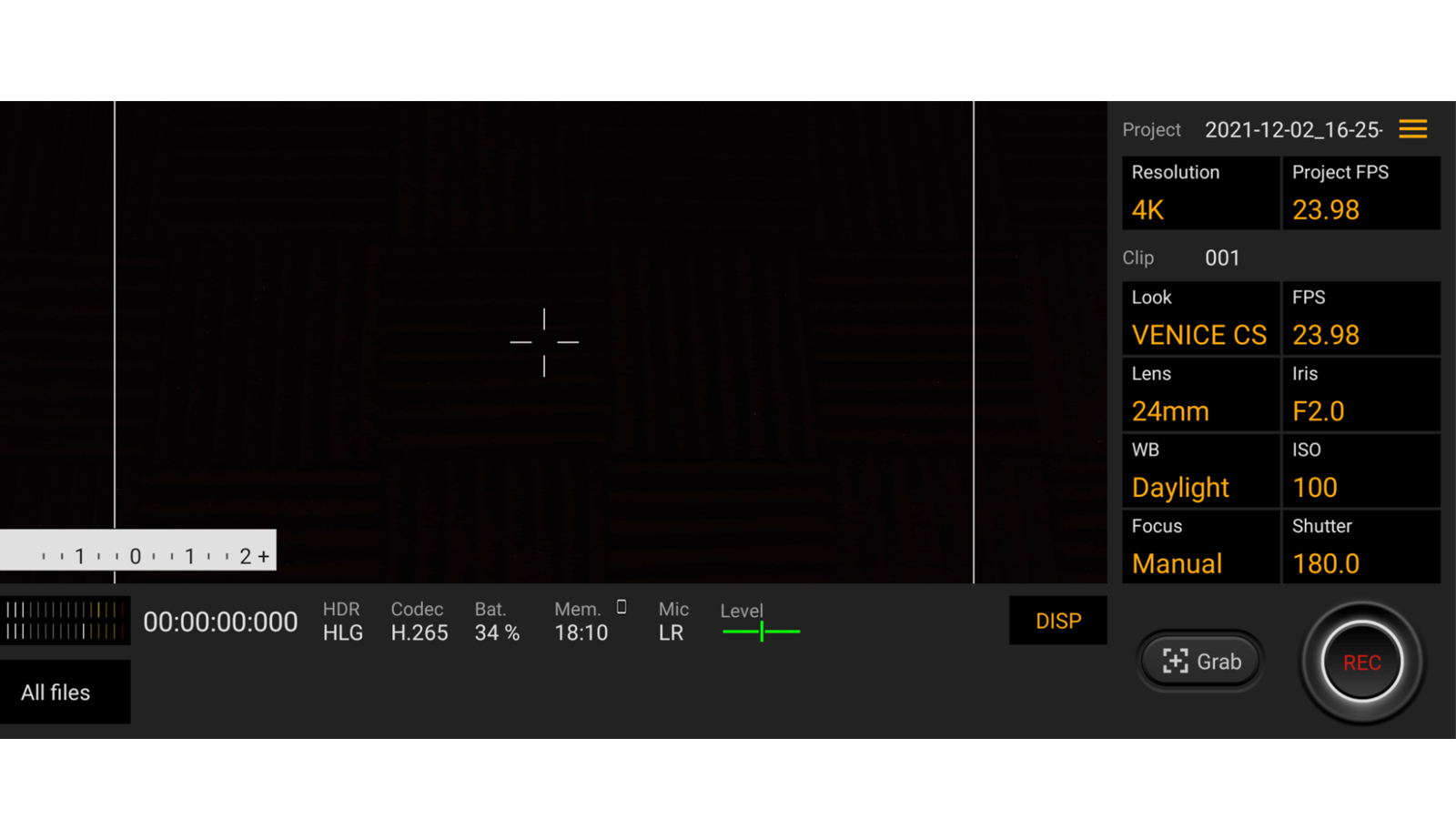
Where Sony really stands out with its imaging is the camera interface on the Xperia Pro-I. It’s the only manufacturer to ditch smartphone-style photography in favor of a more camera-esque UI that relies on the physical shutter release and features on-screen capture information when taking photos, and sports extensive film-grade control over video capture.
While Sony’s out-of-the-box apps are great for photography and video capture – and they really are for enthusiasts – most are available on the Xperia 1 III and 5 III. Additionally, Filmic Pro is available for iOS and Android for a pretty nominal cost, unlocking pro-grade manual video control. So while Sony offers something unique, it isn’t as head and shoulders above what’s out there if you don’t mind working with third-party apps.
As for photo quality, Sony's cameras produce classical and natural-looking photos. If we opened up a photography magazine in the 80s or 90s, we’d have expected to see a similar photo style to that which Sony’s Pro-I captures.
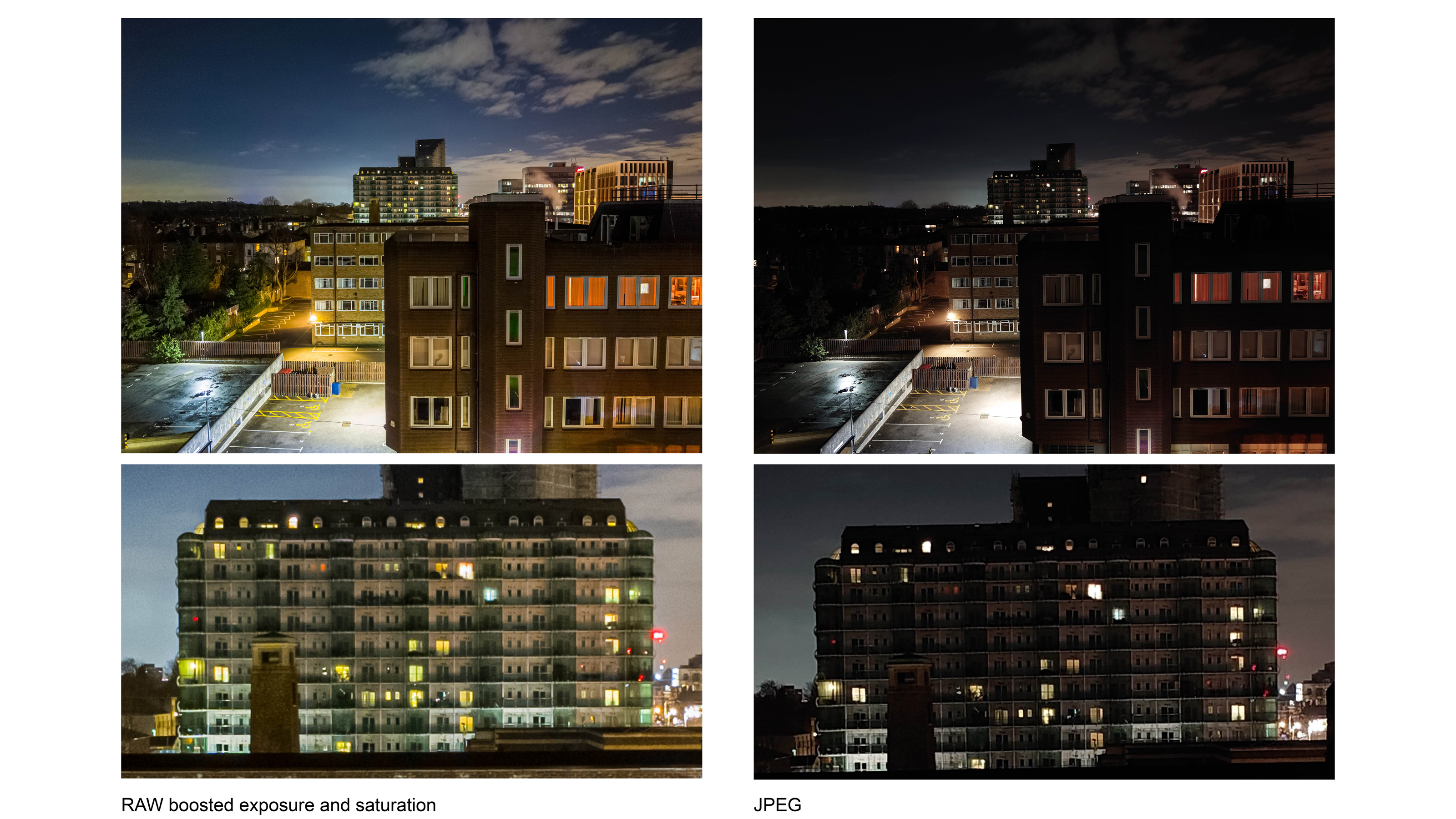
The contrast in Sony’s processing is healthy and dodges the HDR-esque boosted shadows and brightened-up dark spots you get in Galaxy or Pixel photos. The camera can capture a great deal of information – take the raw photo above with a shutter speed of two seconds on ISO 100, steadied on a tripod. The JPEG intentionally downplays the shadows, while the RAW offers up plenty of detail to boost.
As for backlit subjects captured in automatic mode, the Xperia Pro-I isn’t precious about foreground detail unless it clearly detects a face. While the drama in its photos is undeniable, the below example shot on the Pixel 6 Pro instantly highlights the limitations of Sony’s photo processing versus a camera that relies on more aggressive HDR techniques. The background isn’t blown out in Sony’s photo, sure, but it’s an unusable image for the average smartphone user, and even pros won’t be able to pull out usable detail from the cat’s features.
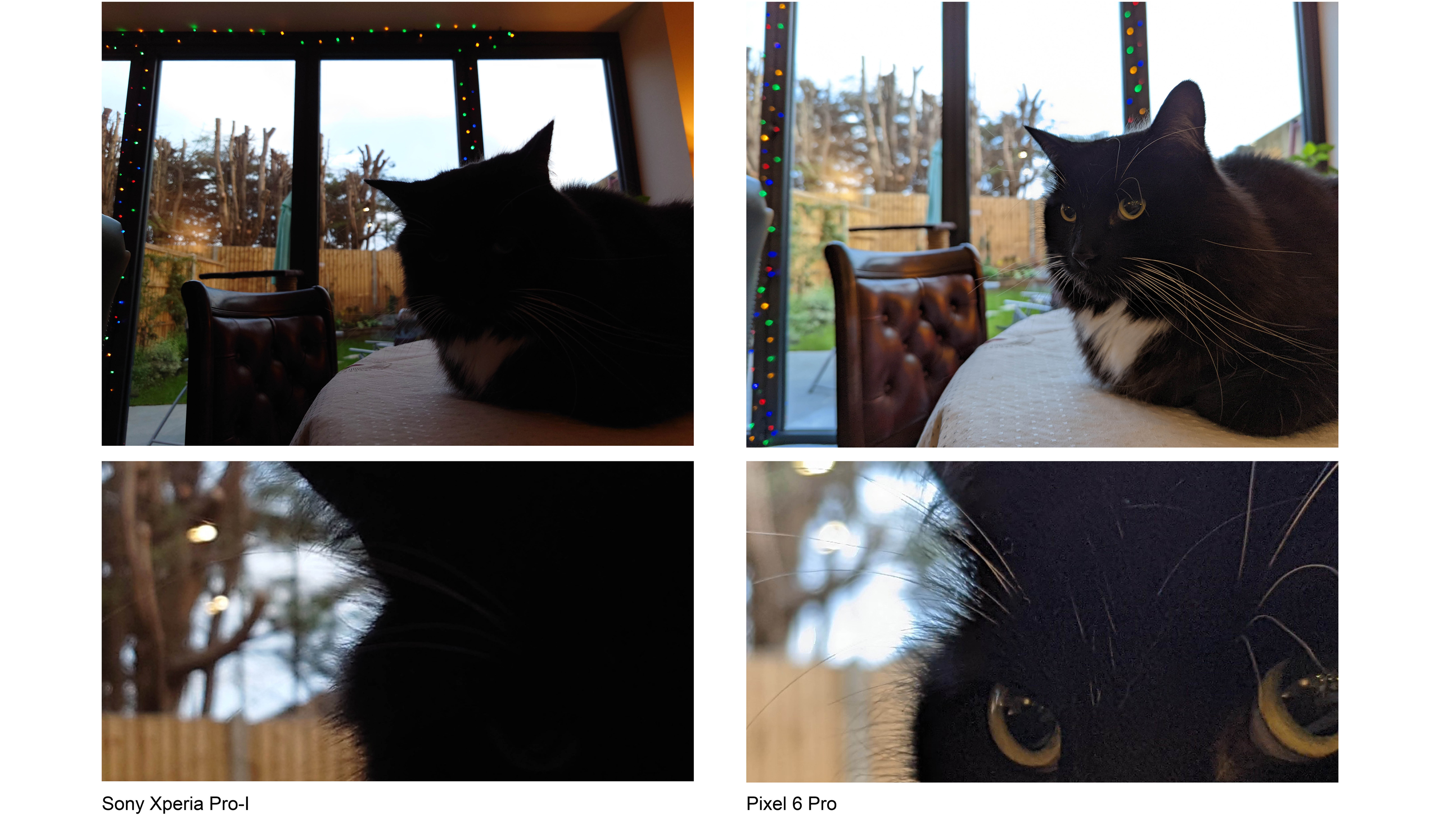
Once we were familiar with its quirks, we really got into our groove with the Xperia Pro-I. We took the camera on a city break and it felt like a compact camera at times. It can capture a pleasing amount of bokeh, there’s a subtlety to its processing that keeps images looking tasteful – far removed from the radioactive processing of some smartphone makers like Realme.
When left in automatic mode for most of the time, it captures modest amounts of noise and exposes photos less than the competition, making for more atmospheric shots.
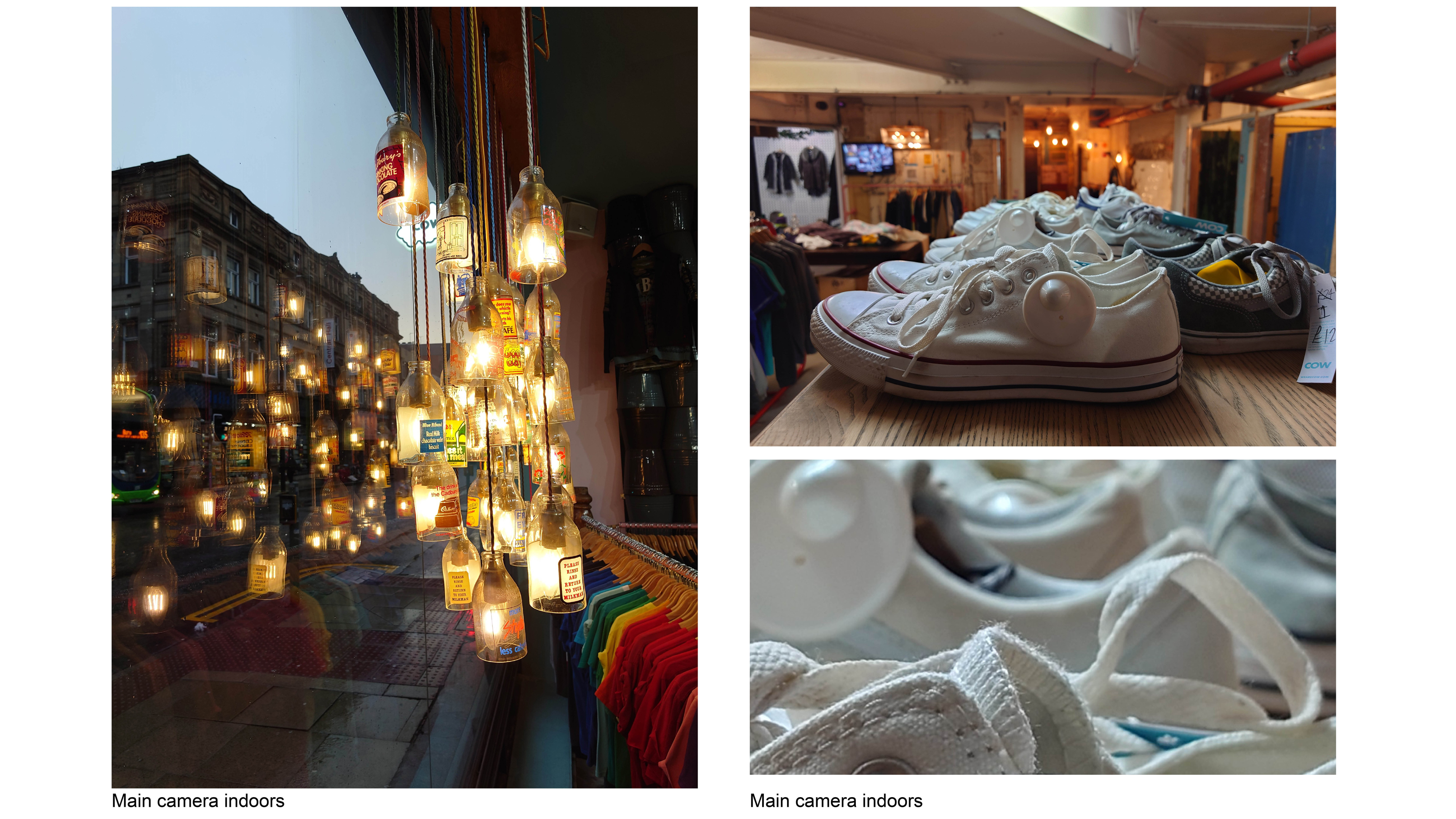
Compared to another big sensor smartphone – the Xiaomi Mi 11 Ultra – the Pro-I is also more versatile.
With its slightly smaller sensor and variable aperture, you aren’t forced to capture bokeh when you don’t want to, with Xiaomi’s shallow depth of field being overkill at times. The Xperia Pro-I’s processing is also more natural, though the Mi 11 Ultra’s secondary cameras are superior.
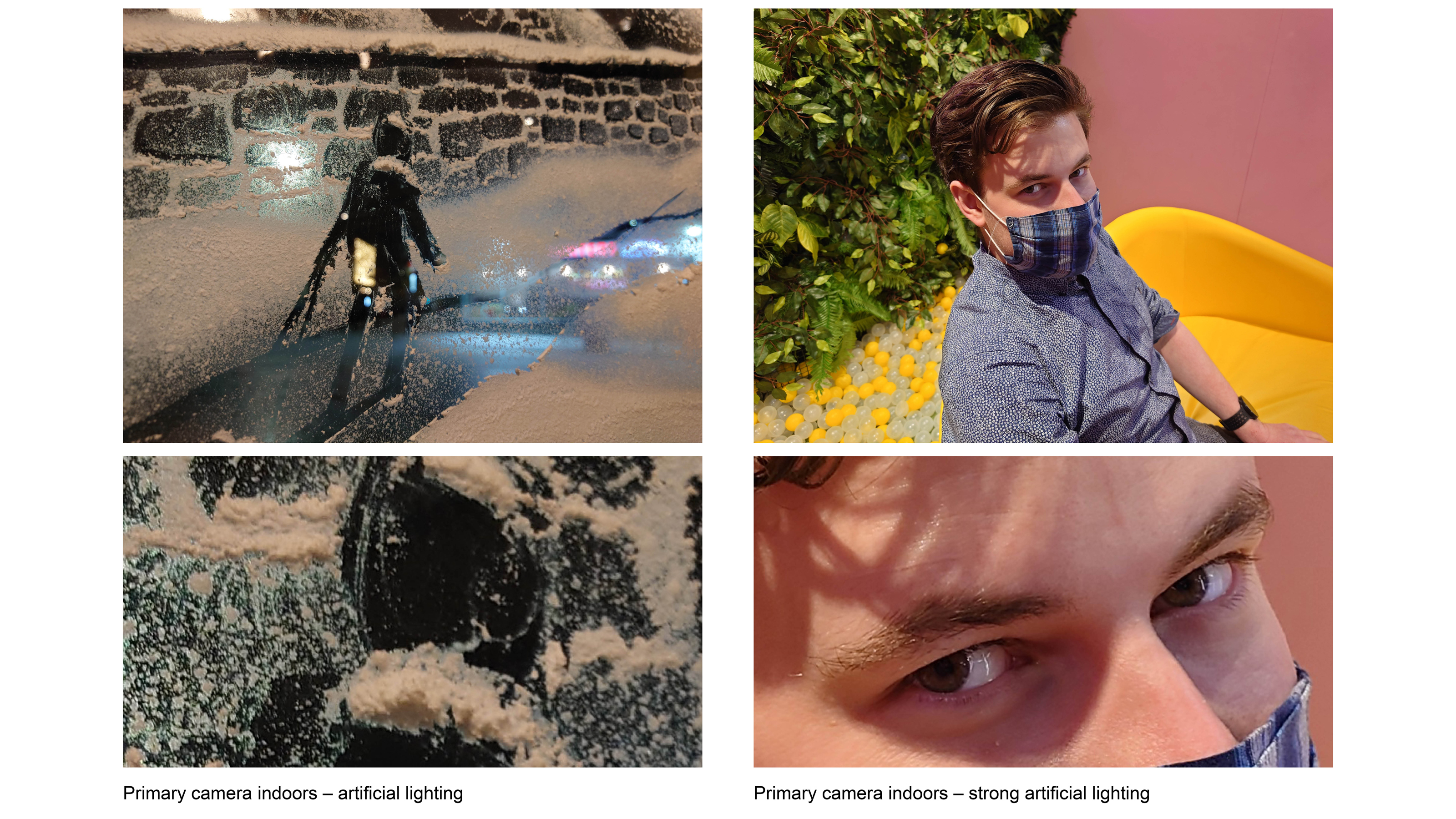
The Pro-I focuses quickly and eye-tracking does a good job. When capturing photos indoors, however, photos can be a little soft when cropping in.
Colors captured by the Pro-I are generally accurate, and skin tones have an almost Canon-like warmth to them under incandescent light, and a natural coolness in fluorescent light.
More impressive is the fact colors across all three cameras are consistent. Even when there’s a light source introduced as you switch to a wider lens, there aren’t the huge color shifts seen in some competing cameras – though there are obvious exposure changes.
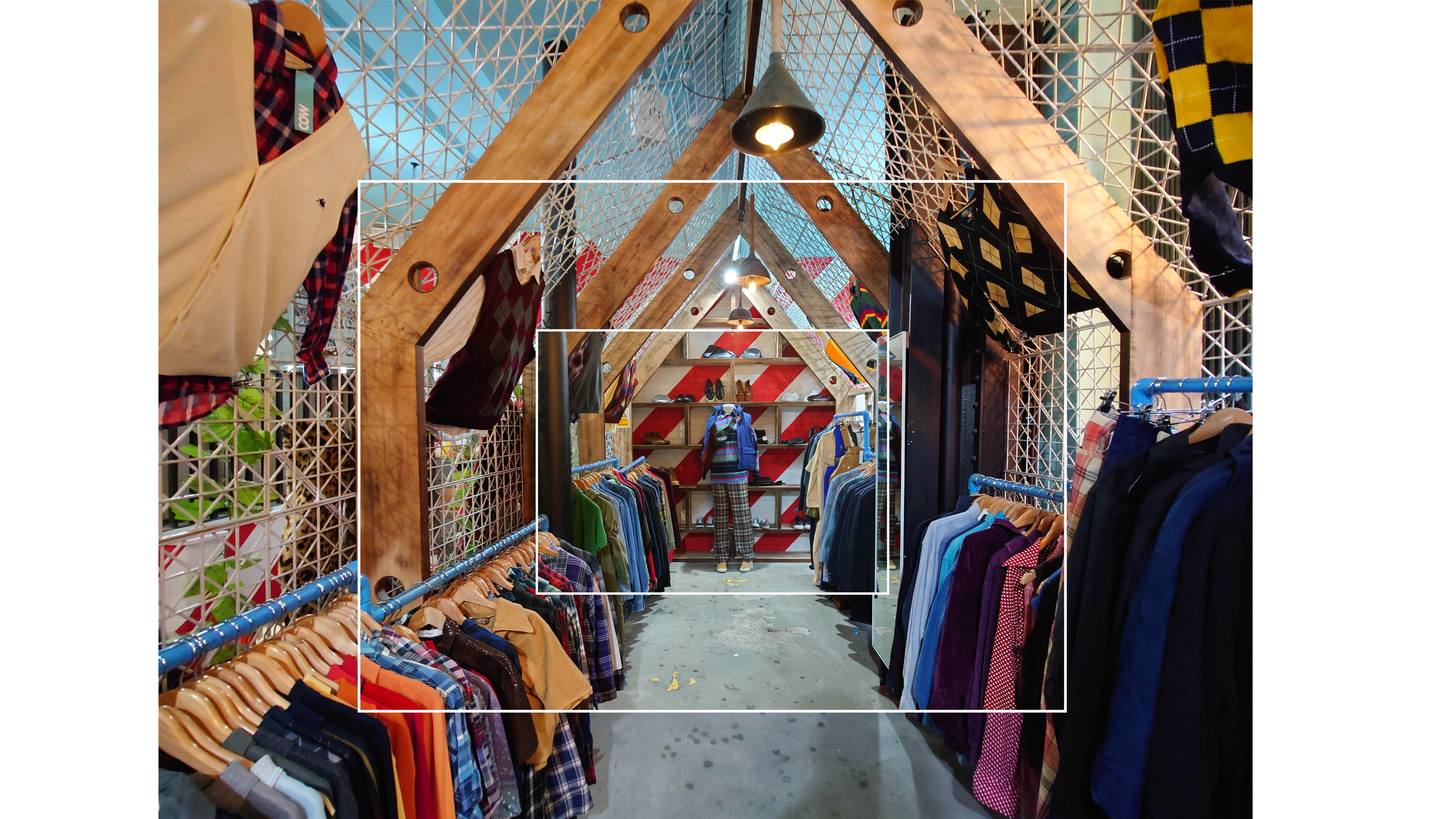
From a usability point of view, the camera forced us to use the physical shutter release for photo capture in all modes other than Basic which takes some getting used to. When we handed it to a stranger to take a photo, they had no idea what to do with a physical shutter key on a phone.
Quirks aside, the Sony Xperia Pro-I is a capable camera phone for photography. We enjoyed the traditional focal lengths – 16mm, 24mm, and 50mm. That said, it isn’t the technical showpiece Sony’s pricing suggests it is – instead, it’s another very good Sony camera phone that costs a lot of money.
As for video capture, once you’ve decided which of the three apps you’ll use to capture it, results look good.

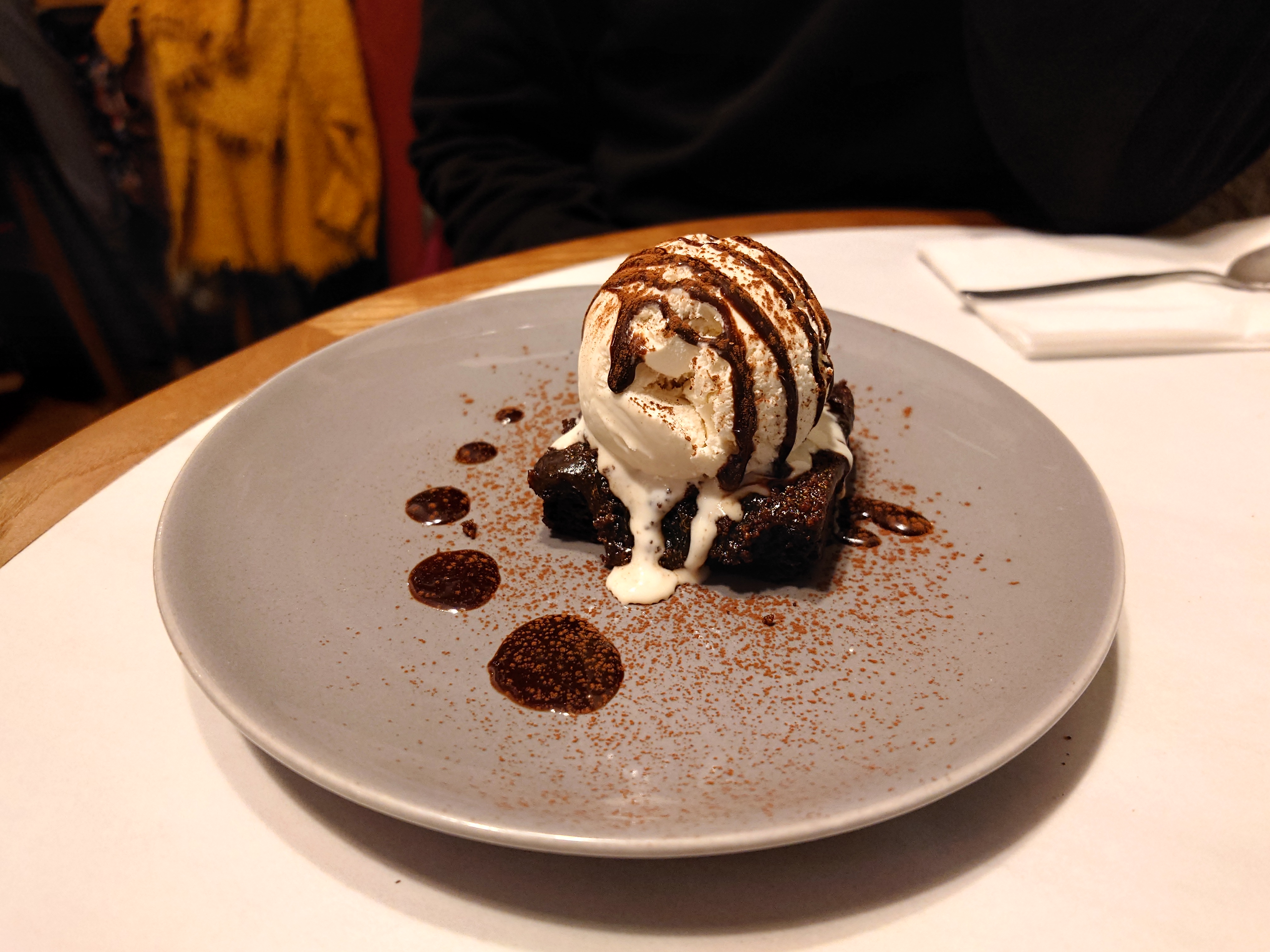


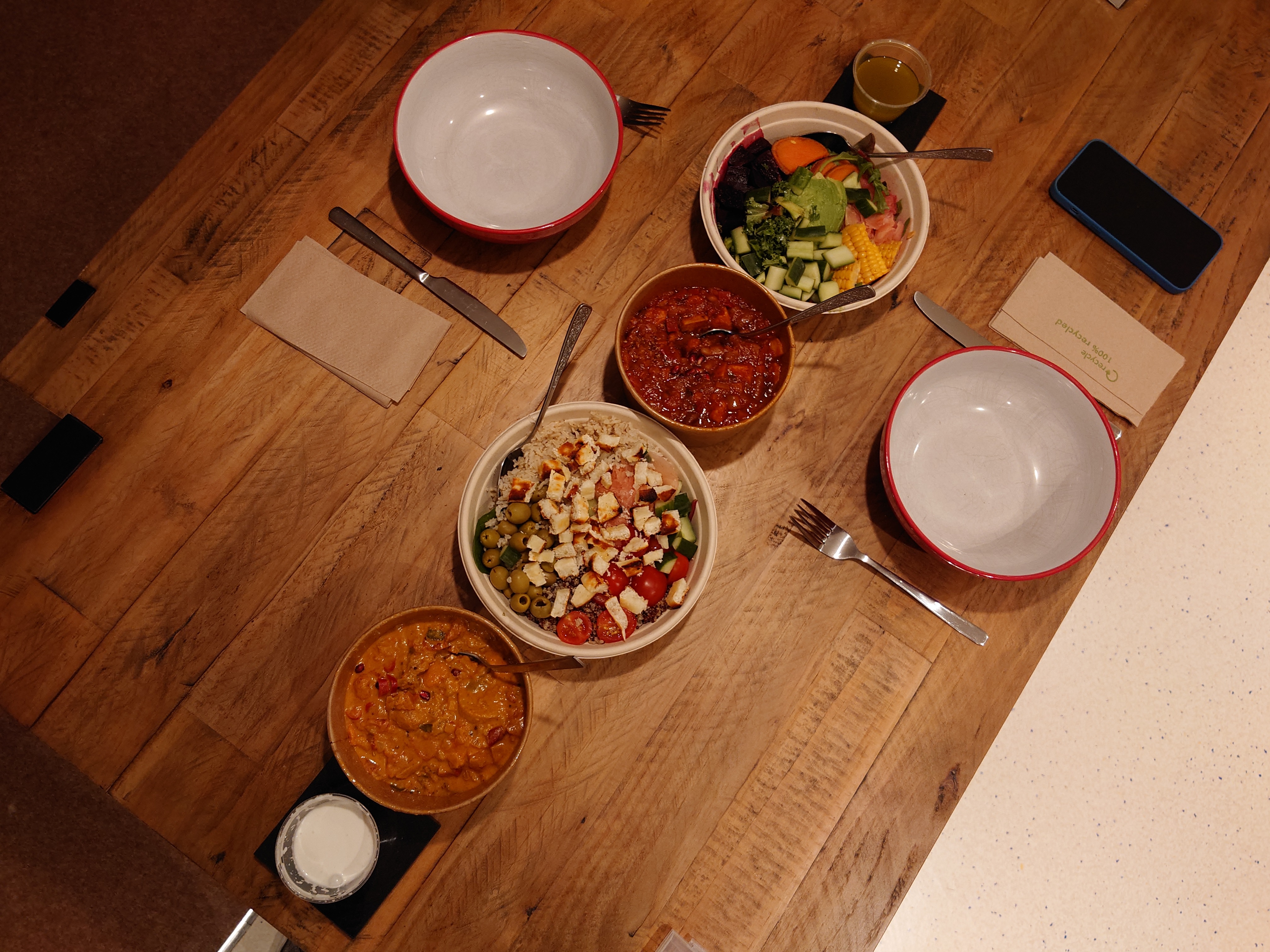
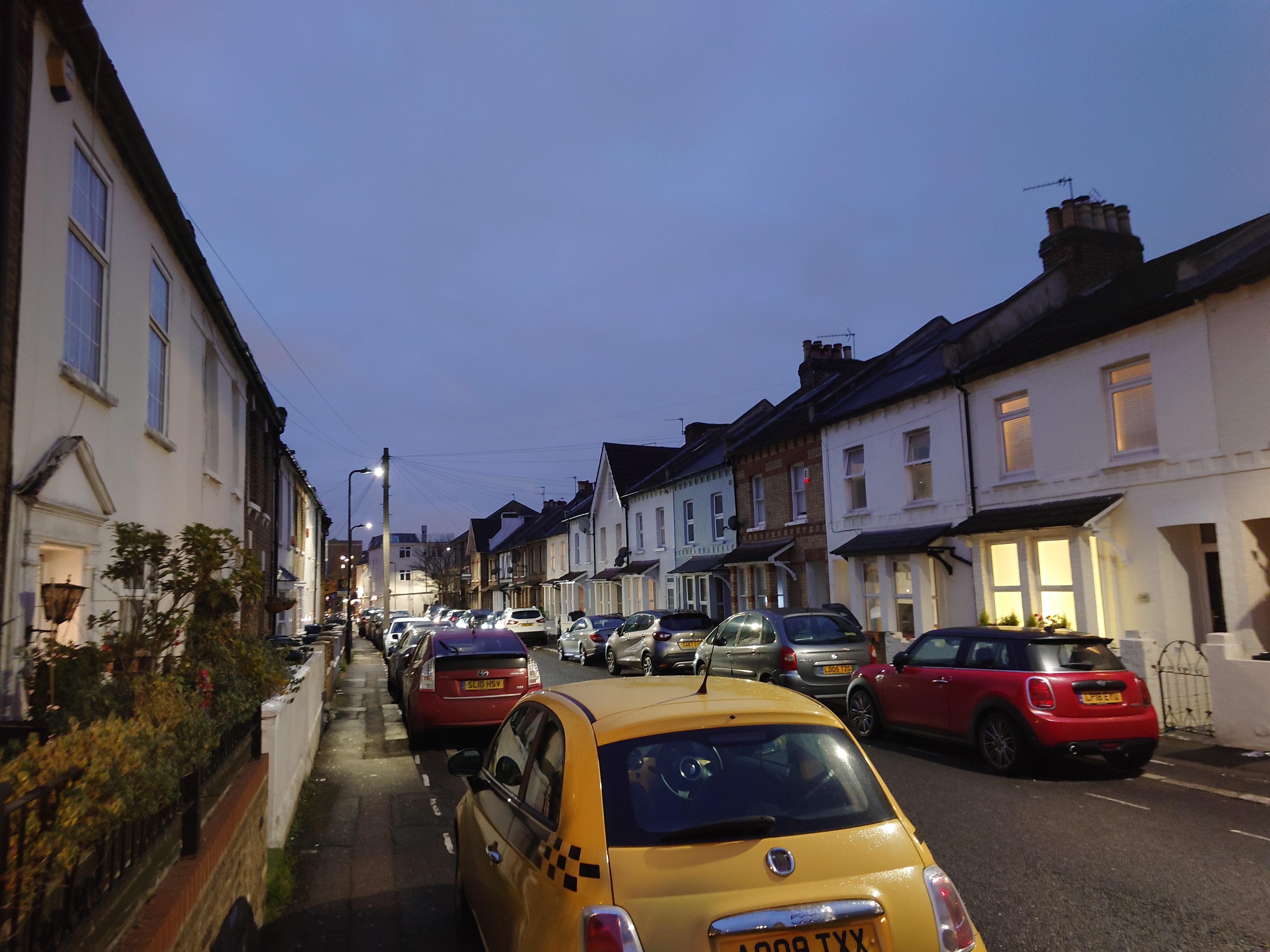
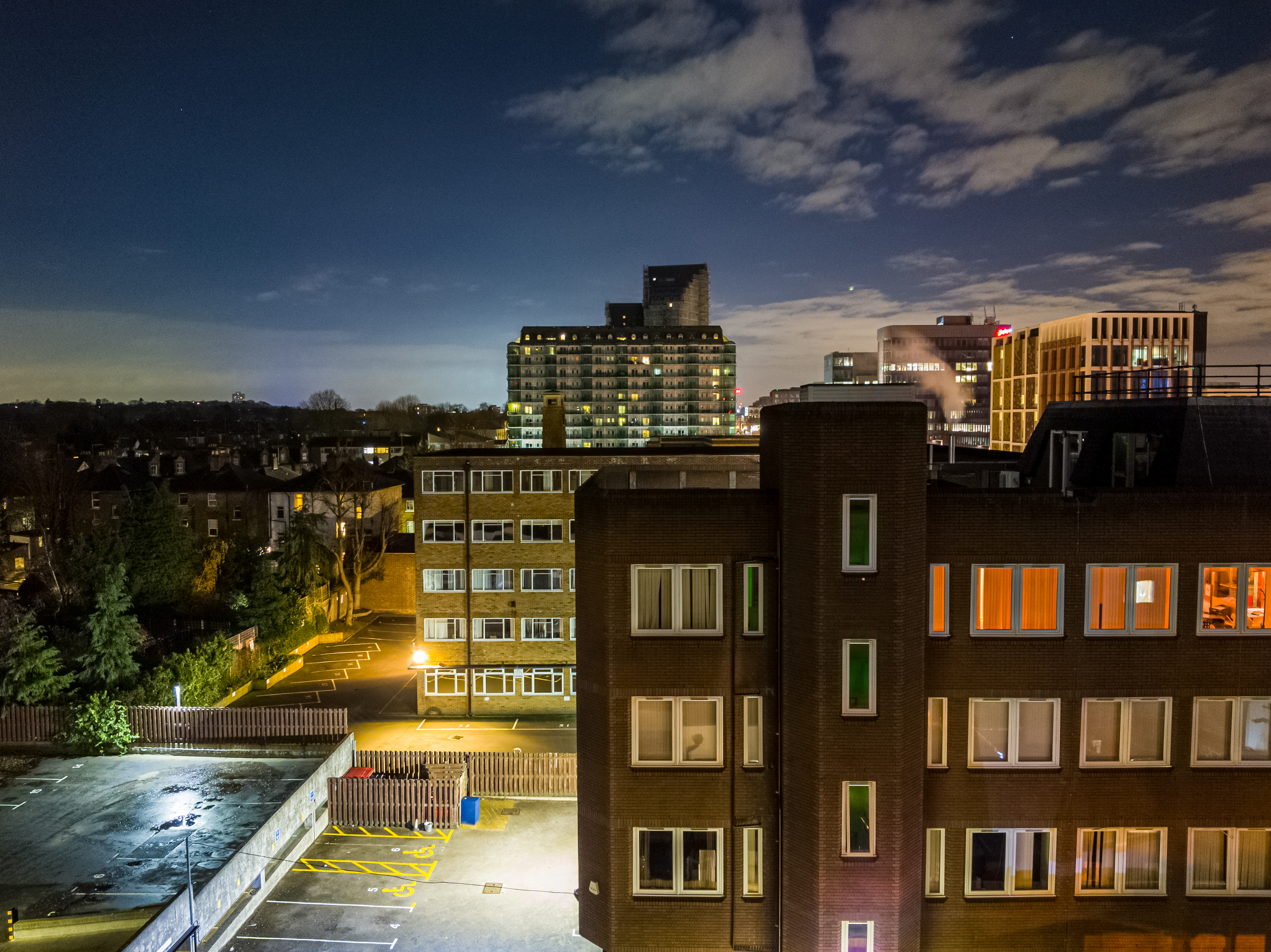
What’s great about the Xperia Pro-I is that all three cameras are available for video capture across all three apps. Feed them balanced lighting, and you can capture some stunning footage with impressive detail.
The camera has reliable exposure, and its colors look natural. We also salvaged significant shadow detail when we took the video into an editing suite, which isn’t bad going for a smartphone. However, dark environments overwhelm it, resulting in noise – especially when using the ultra-wide camera.
As for the selfie camera, the 8MP hardware is unremarkable. It’s the same 1/4-inch sensor we saw on the original Xperia 1 three years ago, matched with a 24mm f/2 fixed-focus lens. In turn, it’s sufficient for a front camera – video calls and casual selfies are fine, but we avoided it for the most part. Sony has made an external monitor available for vlogging, making rear camera selfies simpler, and it costs $200 or £169.
Performance and specs
Unlike the original Xperia Pro, the Pro-I features the latest widely available flagship chipset – the top-end Qualcomm Snapdragon 888, which is matched with 12GB of RAM. It also sports an ample 512GB of storage, and you can expand on it via the microSD slot.
In everyday use, the Pro-I delivered top-tier smartphone performance, able to run any game you’ll find on the Google Play store while delivering smooth interaction and 4K video playback.
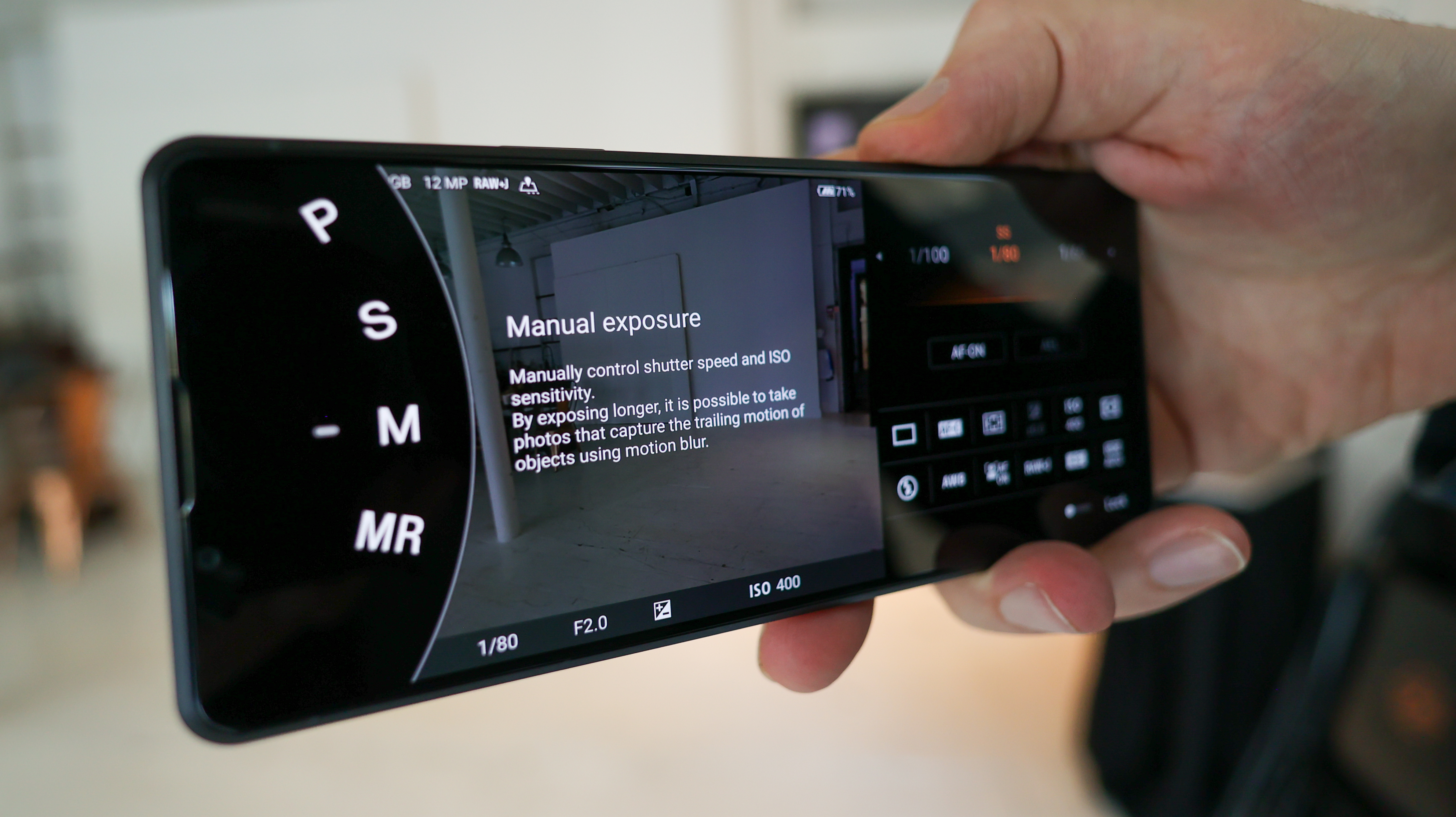
Sony’s latest Pro runs Android 11, which isn’t the newest version of Google’s OS. That said, Sony has historically been reliable when it comes to updating its phones, and Android 12 will be rolling out to the Pro, along with Android 13 in due course.
The Xperia 1 III scored an average of 3474 in our Geekbench 5 testing, which is exactly what we’d expect from a top-end phone in 2021. The Samsung Galaxy S21 scored 3367 and the OnePlus 9 Pro beat that with 3630.
We found 5G connectivity to work well, with the strength and reliability of the signal being comparable with other handsets of this type. In a borough of London with 5G connectivity, we were able to achieve speeds of 320Mbps down and 50MP up on EE, which is the same speed reached on the Google Pixel 6 Pro and an iPhone 13 Max.
Battery life
Sony included the same battery in the Pro-I as it did in the Xperia 1 III, which means more of the same great battery life.
The Pro’s 4,500mAh cell isn’t huge on paper, but the phone’s screen doesn’t actually have as much surface area as some other handsets given its 21:9 narrow dimensions. Nevertheless, it will need a nightly charge, especially if using the camera a lot.
At the end of a full working day, we had around 20% to 30% charge remaining after moderate use, so if you’re careful and turn it off at night, you might be able to eke two days out of it, but you’ll more likely get one.
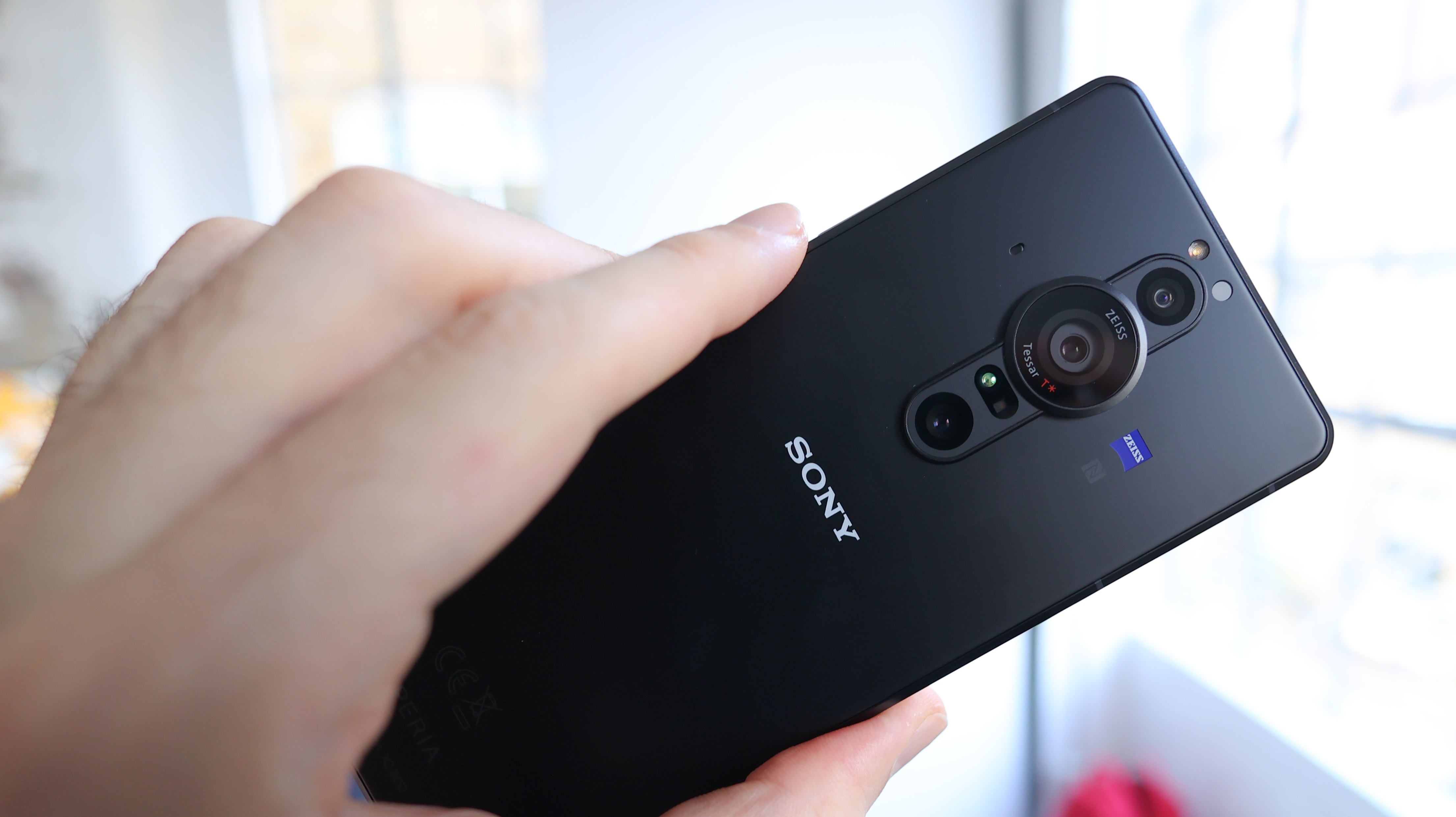
The phone can charge at up to 30W, and the charger ships with the phone, powering it up by 50% in 30 minutes. This isn’t the fastest charging we’ve seen, falling behind OnePlus and Xiaomi, however, it beats Apple’s smartphone standard charging speeds.
Frustratingly, wireless charging isn’t available on the Pro-I. This is a real head-scratcher, given the tech is on the Xperia 1 III, and it’s also ubiquitous now, with charging spots in coffee shops and furniture far and wide.
Should I buy the Sony Xperia Pro-I?

Buy it if...
You are a photography and videography enthusiast
For anyone who wants the most comprehensive out-of-the-box capture apps on a smartphone, the Xperia Pro-I is unmatched. The degree of control it offers when it comes to image capture is akin to that found on a premium mirrorless camera, and the main camera is also among the best on any smartphone.
You want a 3.5mm headphone jack
After a few years of getting used to Android phones dropping the 3.5mm headphone jack, we’ve now seen Sony re-embrace the technology – first on the Xperia 1 III, and now on the Pro-I. If you really want that headphone jack, and you need a top-end phone, this is one of the best handsets for you.
You want the best Sony camera phone
Despite no periscope camera, the Xperia Pro-I is still our Sony pick for imaging. It’s 1.0-type sensor may not be one inch, but it sports big pixels that do a great job of capturing photos across lighting conditions. While not the best camera phone for most, anyone who loves Sony’s more natural take on photography will enjoy what the Pro offers.
Don't buy it if...
You want the maximum bang for your buck
The Xperia Pro-I is incredibly expensive. While it doesn’t cost as much as the original Pro, it’s still pricier than any other flagship smartphone, and despite this, it misses out on some features like wireless charging and a periscope camera. In turn, it’s a tough sell for most.
You want the maximum help when taking your photos
The Xperia Pro-I doesn’t boost shadows, ramp up vibrancy or sharpen images too aggressively, and in turn, won’t be the best choice for folks who want an entirely automated experience. Even in Basic mode, the phone still fails to brighten up backlit subjects or illuminate night scenes quite like the competition.
You want a great zoom or ultra-wide camera
The Sony Xperia Pro-I’s ultra-wide camera loses out to the Oppo Find X3 Pro and Xiaomi Mi 11 Ultra, both featuring high-resolution sensors and lenses with autofocus. The telephoto camera is also inferior in its reach when compared to the Galaxy S21 Ultra and Pixel 6 Pro. In turn, if you buy the Xperia Pro-I, it should be because of its main camera sensor.
- These are the world's best camera phones
Basil Kronfli is the Head of content at Make Honey and freelance technology journalist. He is an experienced writer and producer and is skilled in video production, and runs the technology YouTube channel TechEdit.
